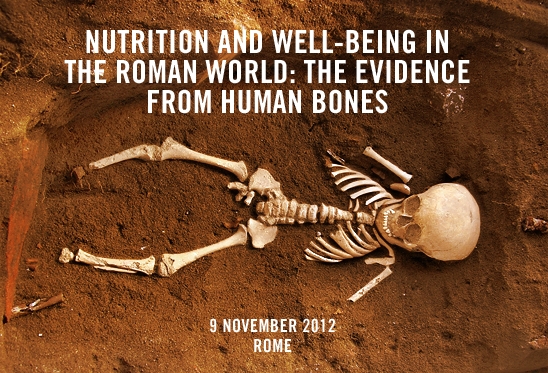Nutrition and Well-Being in the Roman World: The Evidence from Human Bones

How “well” were ancient Roman populations? Did Romans suffer from widespread malnutrition and its concomitant cycles of chronic illness? Or did Rome’s pan-Mediterranean “food-network,” improved transportation, and agricultural techniques yield healthier, better-fed populations?
Human bones are an important source of information on what Romans ate and how well they were: stature may reflect nutritional patterns in youth; cavities and wear patterns in teeth can be markers of sugars and grains in the diet; and isotope analysis can indicate the source and quantities of proteins, like terrestrial meat or fish. New discoveries of mass graves in and around Rome—from the great graveyards unearthed in the suburbs, the graves of epidemic victims found in the catacombs at Ss. Peter and Marcellinus—and the reevaluation of material from Herculaneum and Ostia have now made it possible to reassess Roman diet and Roman wellness with new evidence and new techniques.
This one-day conference considers the problem of Roman nutrition from the perspective of human skeletal evidence, focusing on skeletal collections from Rome and central Italy. Participants are asked not only to discuss their material as it relates to problems of human nutrition, but also to discuss the usefulness and pitfalls of using skeletal evidence for understanding human diet and wellness.
Contact information: Kim Bowes, Mellon Professor-in-Charge, American Academy in Rome, kimberly.bowes [at] aarome.org (kimberly[dot]bowes[at]aarome[dot]org).